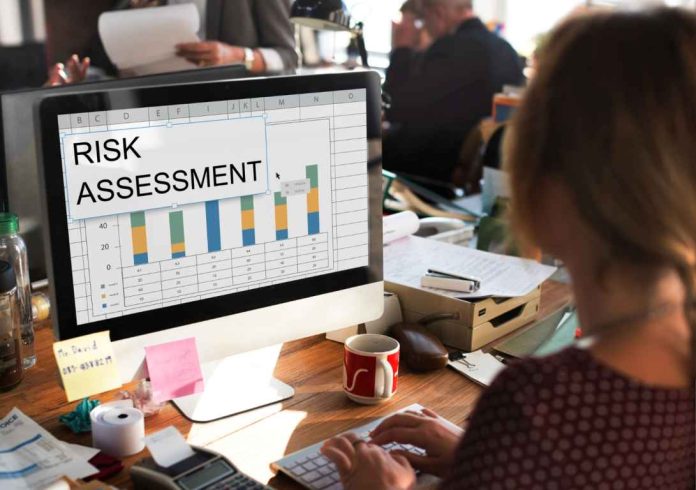Dynamic Risk Assessment indicates a continuous process of assessing the risk, identifying the hazards, and taking immediate action. Eliminate the risks to have a hassle-free experience.
Monitor the incidents and review the results. However, risks can be present in any operation. Therefore, you should apply some strategies to identify those risks.
Circumstances can change at any point in time. You need to be cautious about the changes and behave accordingly. Hence, there must be some ways to determine the vulnerabilities.
Through formal risk assessment, you cannot predict the probable risks. Therefore, you should try dynamic methods to monitor the environment.
This piece will highlight the procedure of dynamic risk assessment and manual handling. Furthermore, you can check the factors for manual handling. Choose the best way to assess the risk in any type of environment.
Table of Contents
Meaning of Dynamic Risk Assessment
Let me explain the concept of Dynamic Risk Assessment in full detail. Suppose, there is a sudden change in the software of the environment. However, it is essential to check the functions before you implement it permanently. This change is exposed to several risks.
So, you need to have a quick procedure to assess the risks of such new software.
The risk assessment process in relation to a changed circumstance must be dynamic. Moreover, there can be unpredictable changes at any point in time.
The changes can occur in different aspects like prices, technologies, profits, selling techniques, software, etc. If you do not have appropriate assessment procedures, your business can have an adverse impact.
Various Types of Risks
You can face two distinct types of risks. They are Static and Dynamic. Furthermore, the definition of such risks depends on the respective circumstances. If the risk does not change in any circumstance, it is a Static Risk—for example, the risk of tackling a childhood trauma.
However, if the risk is sustained in a dynamic or fluctuating environment, it is called Dynamic Risk. For instance, when a nurse visits multiple patients. She will come across different problems in multiple scenarios.
The challenge of handling the risks lies in the type of the risks and how they impact the business. Find out the best strategies to determine the risks. Moreover, take immediate steps to reduce or eliminate them.
What is Dynamic Risk Assessment for Manual Handling?

One of the ways of assessing the risks dynamically is the Dynamic Risk Assessment manual handling. It implies handling the risks manually in a dynamic environment.
Moreover, such a technique will allow the workers to understand the probable risks with the new additions. The process is continuous, thus supporting quick identification of the weaknesses.
Dynamic Risk Assessment is not an entirely different process. It is based on the existing assessment techniques and provides bonus ways of detecting the risky grounds.
However, the employees can manually assess the hazards of the work environment. Therefore, they can predict beforehand whether there will be any risk in accomplishing a specific task.
Furthermore, manual handling also includes identifying the risks of any individual. They can be external or internal parties of the organisation. Preventive measures must be there to tackle such circumstances.
Process to Conduct Dynamic Risk Assessment For Manual Handling
Controlling risks is the primary aim of every worker working in a dynamic work environment. Therefore, Dynamic risk assessment manual handling leads to identifying the biggest risk factors of the enterprise.
Moreover, you should keep track of all the factors responsible for risky results.
I will briefly analyse all the steps in this section. Ensure that you follow all of them for a favourable risk assessment.
Identify The Risk
The first step of dynamic risk assessment is manually identifying the probable source of the risk. It can be from an event, object, or even individual.
]Therefore, you must form a team and start formulating strategies to control the risks. This step includes determining the hazards in your office. Examining the work environment is the most significant activity in this stage.
Identify Those Who Might Be Harmed
After assessing the risks, the next step is to determine the impact. Therefore, you should determine the persons who will be greatly harmed because of the risks. Although you may have measures to control most risks, a few inherent risks remain present always.
Eliminate The Risks
Appropriate controls must be there to identify the risky areas. Hence, the workers must have the target to eliminate or reduce the probable risks. Controlling the risks is undoubtedly the first step. So, you should be aware of the threats.
However, if any risk materialises and causes damage, you must take serious measures. Immediate actions can help in reducing the risk to a manageable level.
Therefore, you can do three things to assess and manage the risks. These are Control, Eliminate, or Reduce. Formulate strong and effective measures to achieve this purpose.
Record the Findings
Controlling or eliminating the risks will not be enough. Things will not change if you do not become more alert about the situation.
Therefore, once you manage the risks, please record the methods. This will help you to act promptly if a similar situation arises in the future.
Moreover, you will have a list of the probable risks in both static and dynamic environments. So, documentation is highly essential, in all circumstances.
Review and Update
Dynamic Risk Assessment is not a once-in-a-lifetime process. Rather, it is a continuous identification of the probable risks and from where they can come. Once you eliminate a particular risk, it does not mean that no more risk will be there.
Therefore, you need to monitor and review the work environment regularly. Keep updating the procedures to deal with the complex risks in a changing environment.
Risk Factors To Consider for Manual Handling

Dynamic Risk Assessment manual handling will involve the identification of different factors. Always consider these crucial factors to identify the risks better.
Moreover, proper risk assessment will ensure a safer environment. Manual handling risks may also include causing injuries or threatening fellow workers.
Furthermore, a person trying to cause harm to himself can also be one of the risks. Often, these damages may be due to certain unfavourable situations in the workplace. So, you must identify the risks and ensure that no one gets hurt during the working hours.
The four major risk factors relevant to manual handling risk assessment are as follows:-
Load
This implies the load present in a work environment with high-risk probability. Most workers may come across heavy loads during work hours.
Therefore, it is essential to identify the workloads or the heavy objects to ascertain the risks. It would help if you verified whether the loads have the potential to cause damage to the workers.
Individual
The next risk factor is the individual. It is of utmost importance to identify the accurate capacities of every worker. Moreover, you must assess the physical strength and determine whether he needs more security. Besides, it is also crucial to observe whether other parties have risks from this person.
Task
The risk factors can emerge as the greatest threats when you become casual about the type of tasks. Hence, keeping track of the tasks and their types is essential. Please ensure that the right person gets the responsibility for the right task.
Improper delegation of duties can hamper the overall process of assessment. You need to analyse the task, examine its type, and verify whether it is safe for all the workers.
Environment
The last and most important factor for Dynamic Risk Assessment is Environment. If you present a good work environment, all the workers will have extra energy to work. Furthermore, identifying the risks in the given environment is one of the first jobs you must do.
If a worker is thorough with the environment, he or she can tackle the losses better. They can hit back and implement adequate preventive measures.
Therefore, assess, manage, and eliminate risks by projecting the probable risks. Find out the persons who have a chance to get harmed from the workplace environment hazards.

Conclusion
Are you worried about the process of dynamic risk assessment manual handling? It is all about observing the workers taking the necessary steps to manage dynamic risk assessment. The environment may undergo several changes. However, you should be aware of the changes and how to tackle them.
Any risk assessment that involves dynamic results ensures that it is a dynamic environment. It means that the environment is subject to frequent changes. Moreover, it can be a corporation, a hospital, or even a gym. Working professionals must take care of the risks and the harm they can cause.
A proper analysis will provide accurate results. Frame the ways to eliminate or reduce the risks for a safer workplace.




